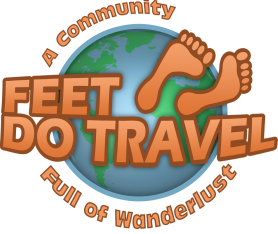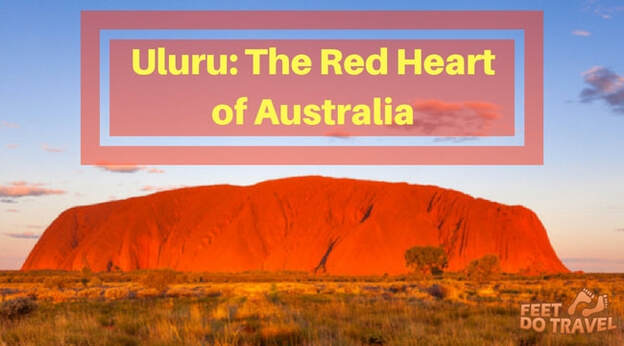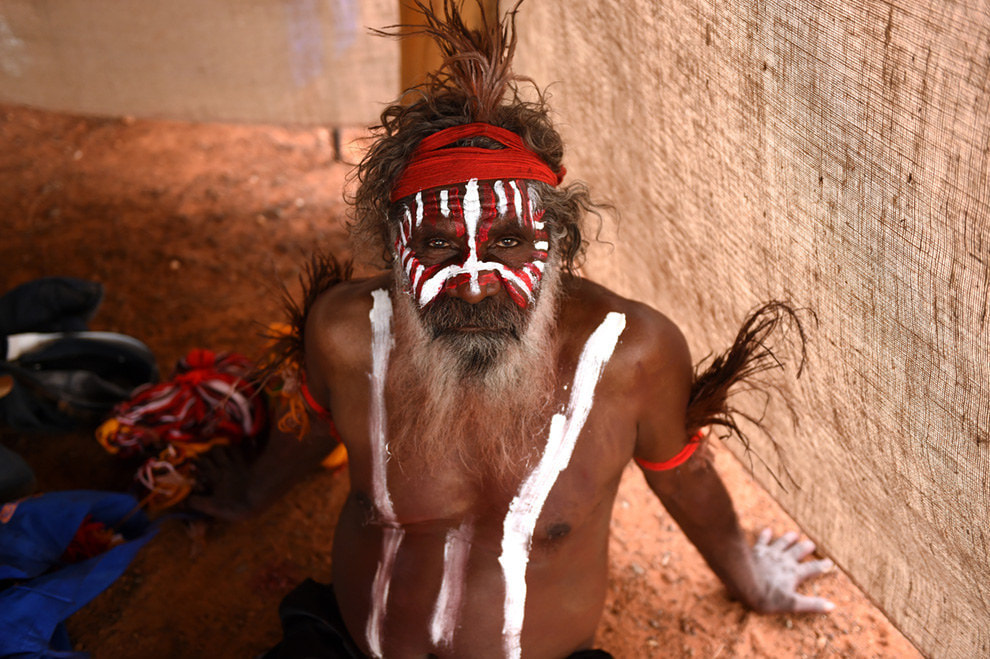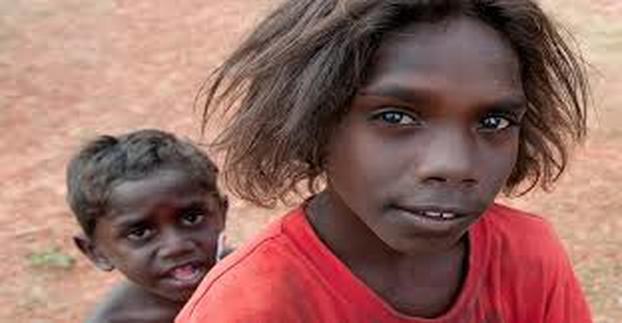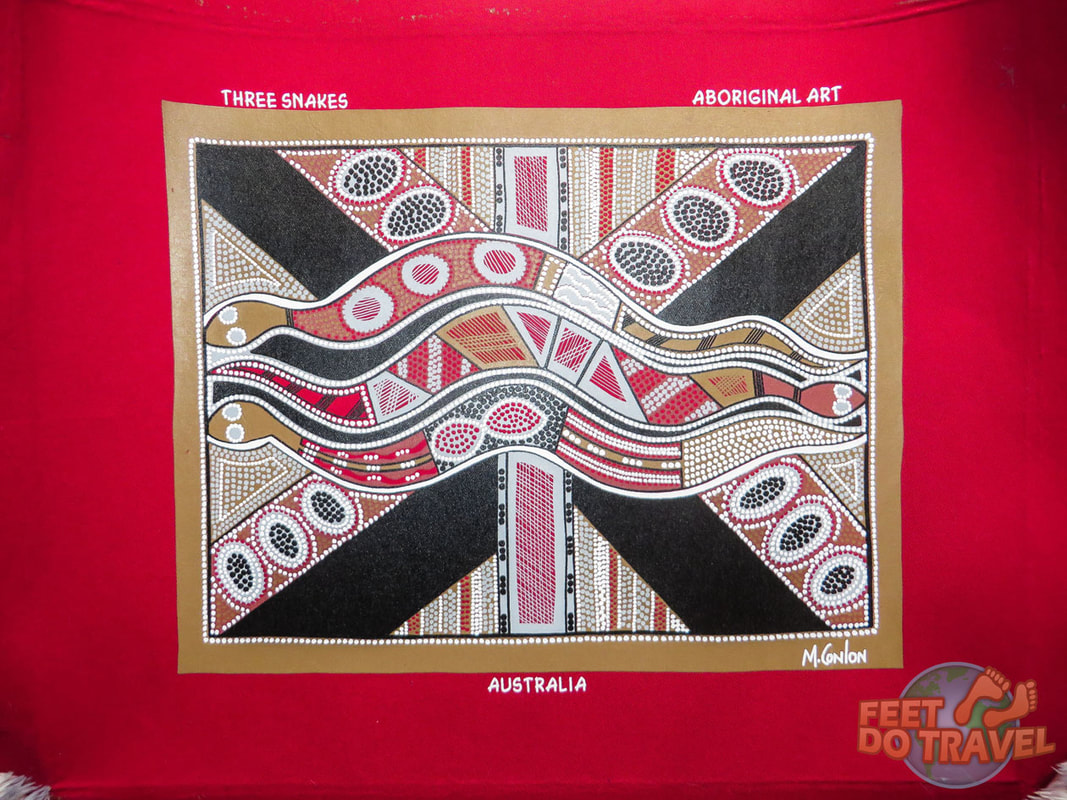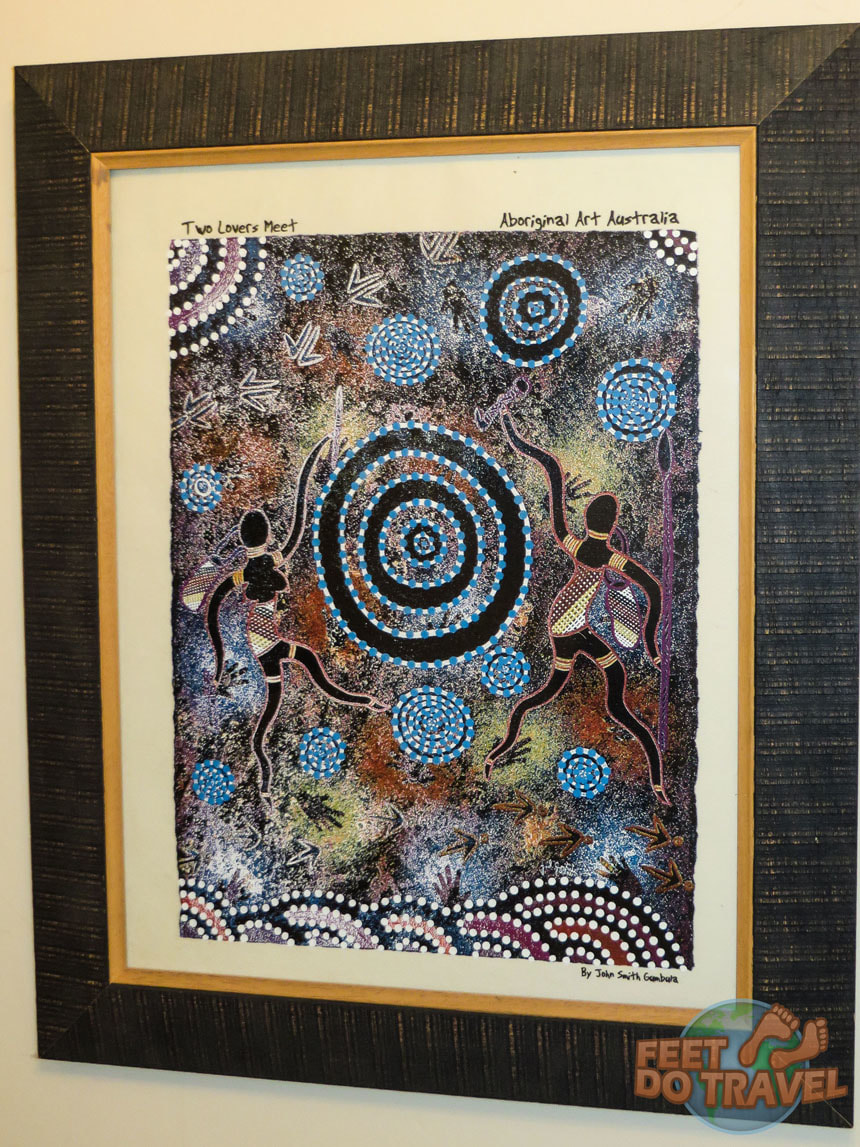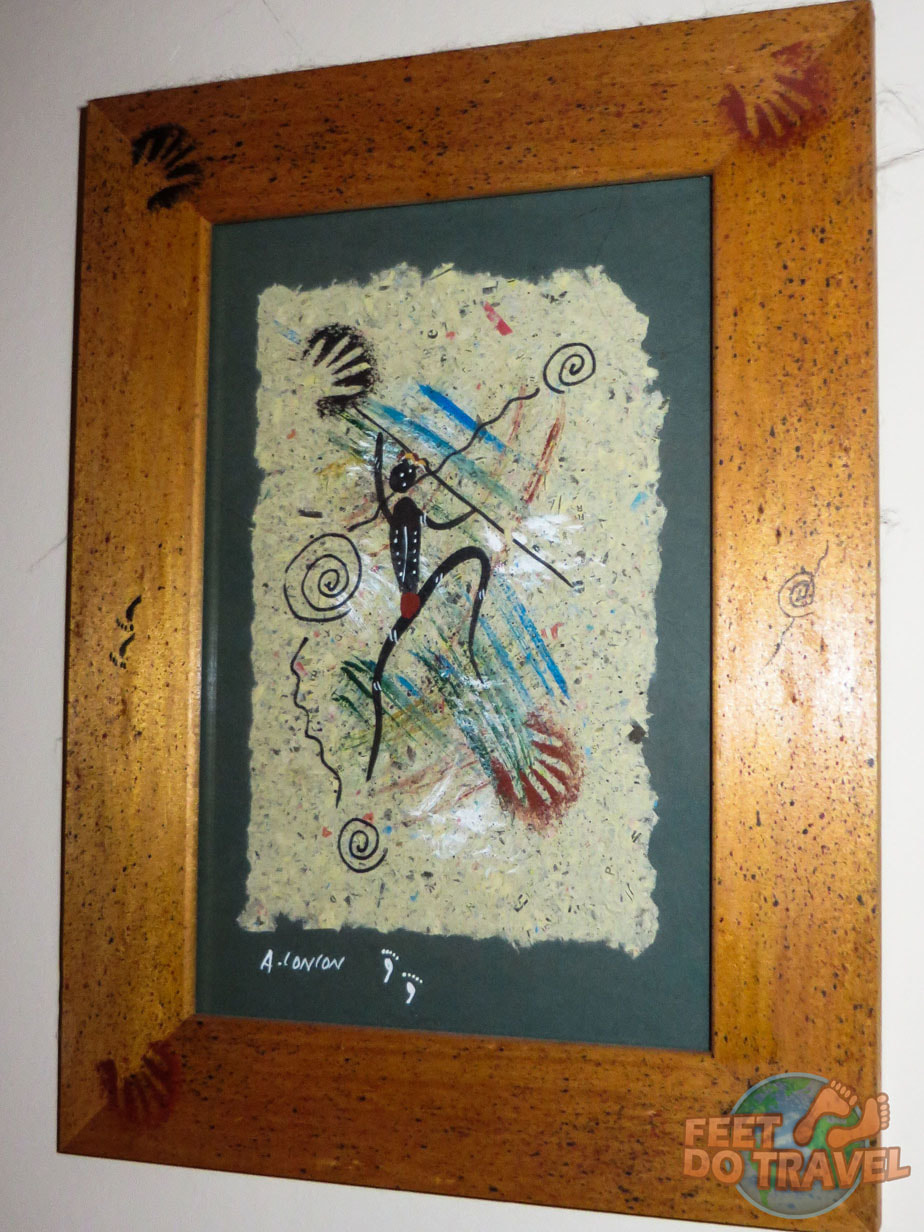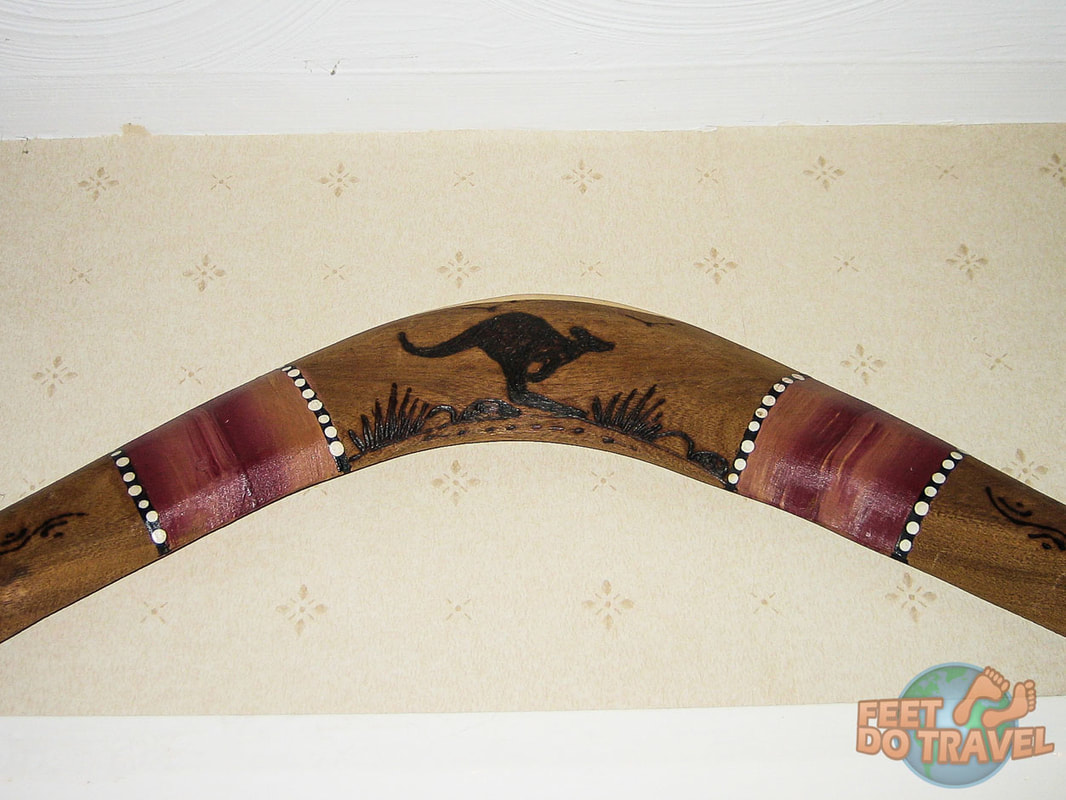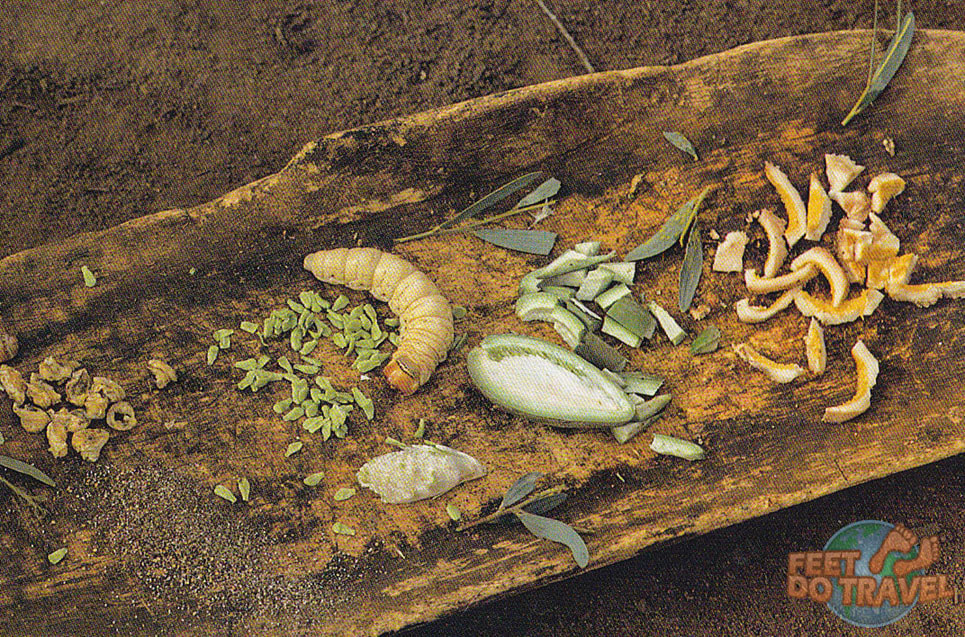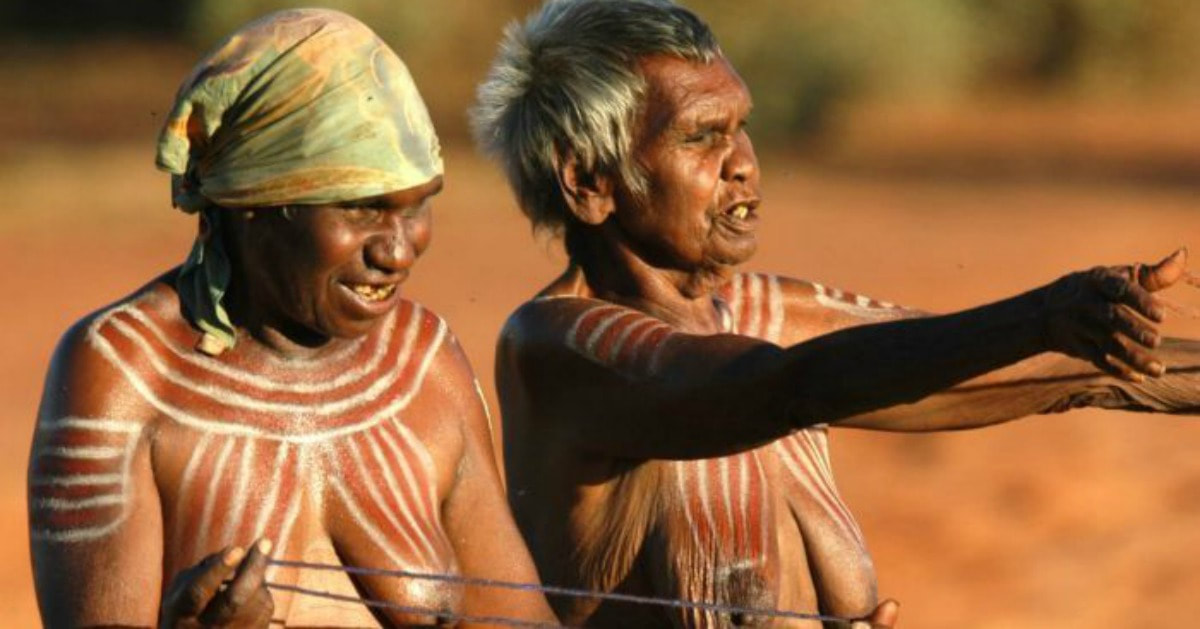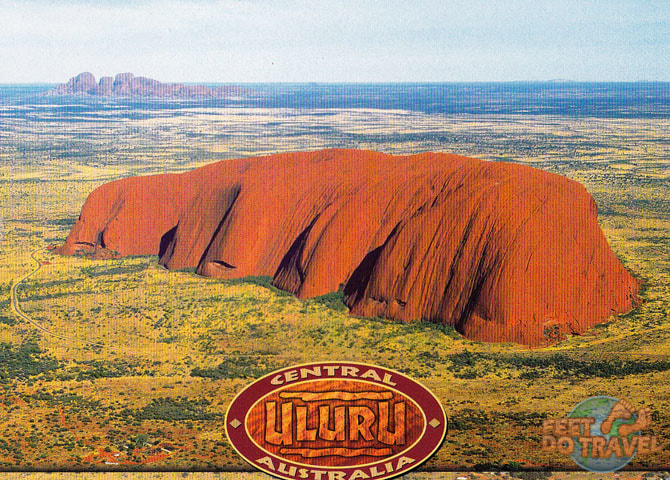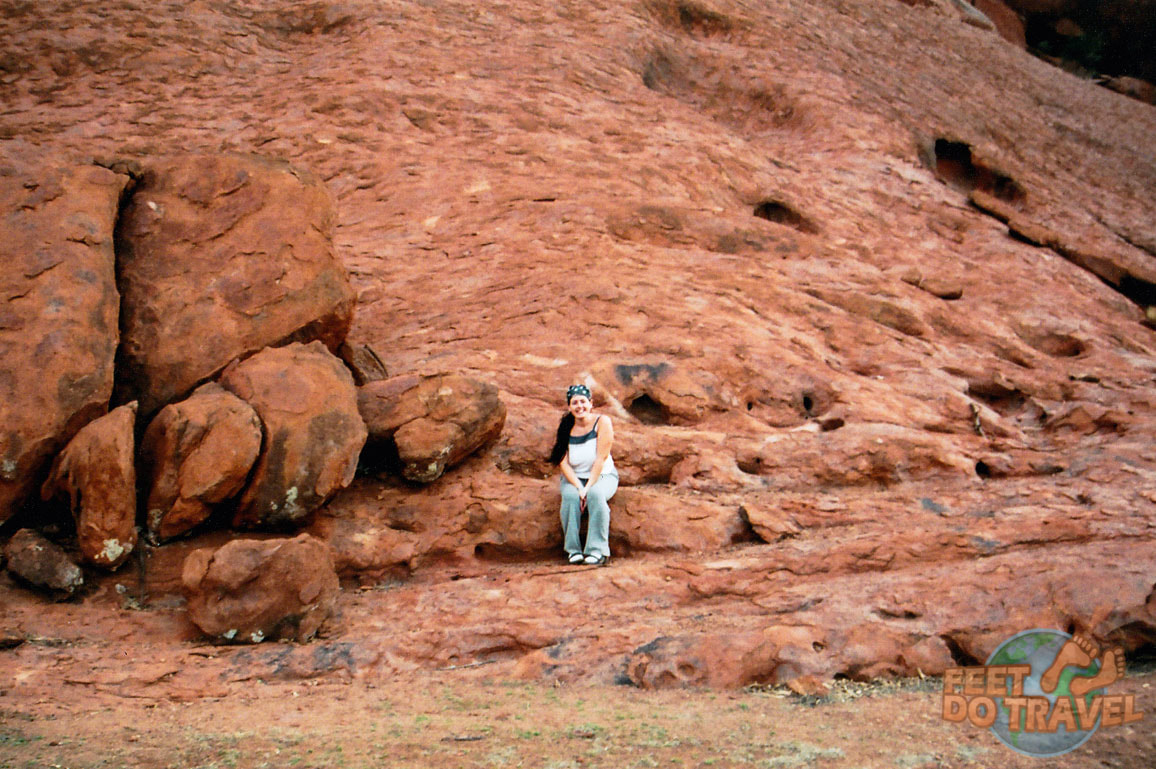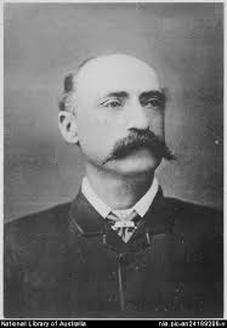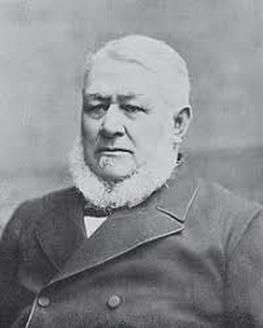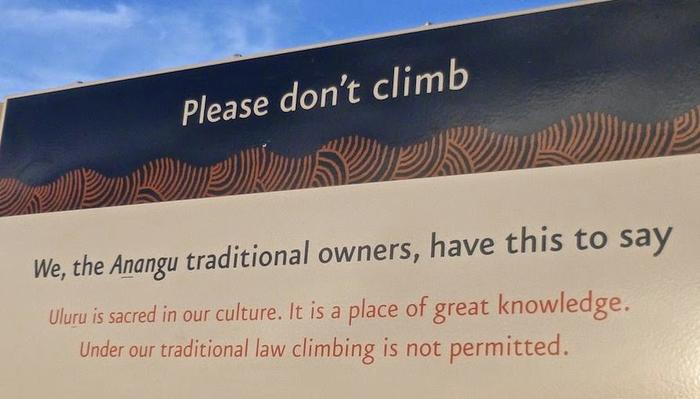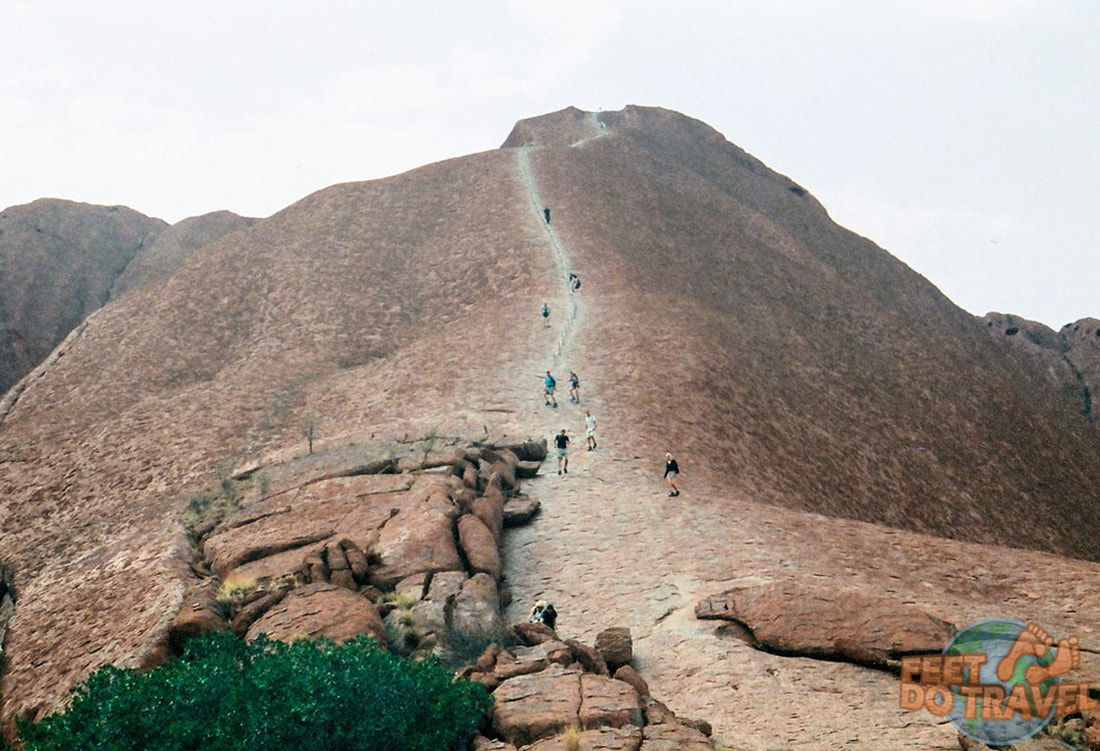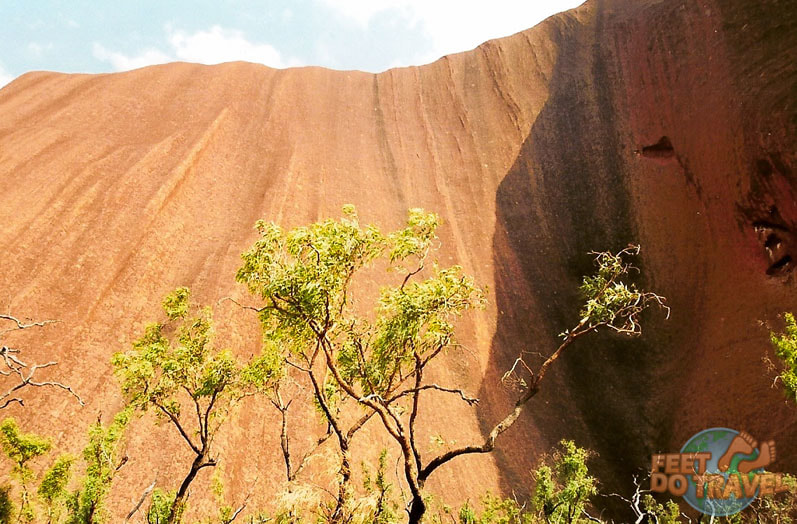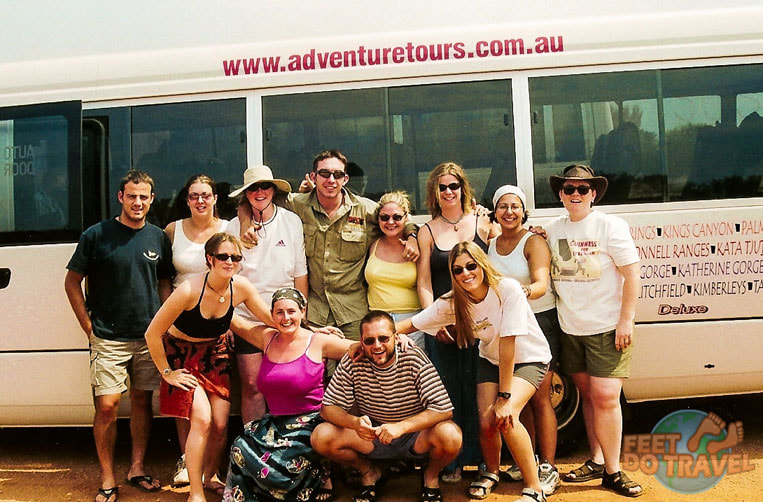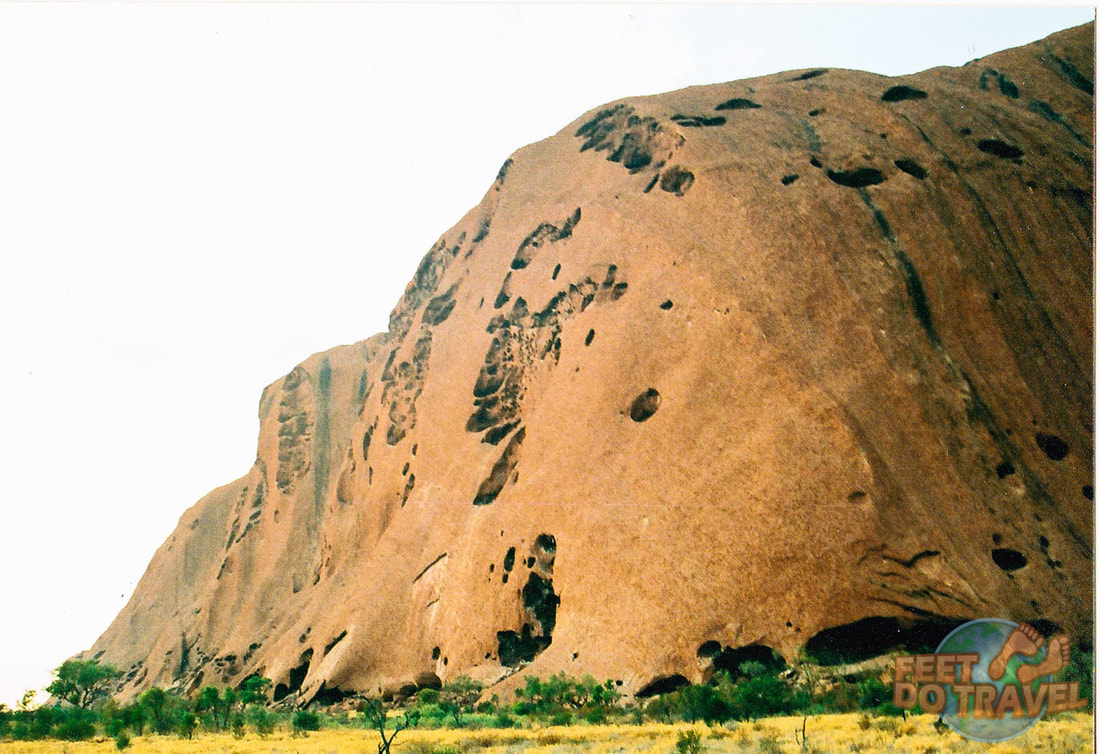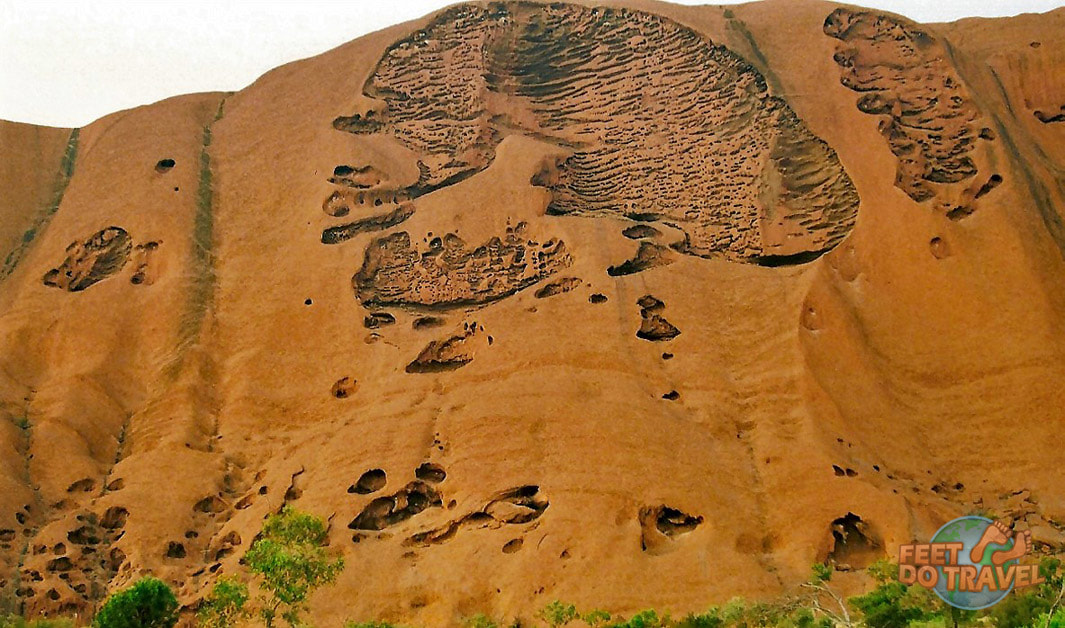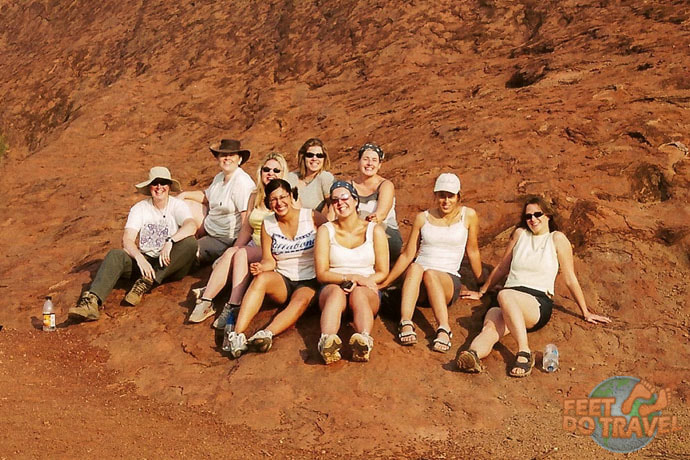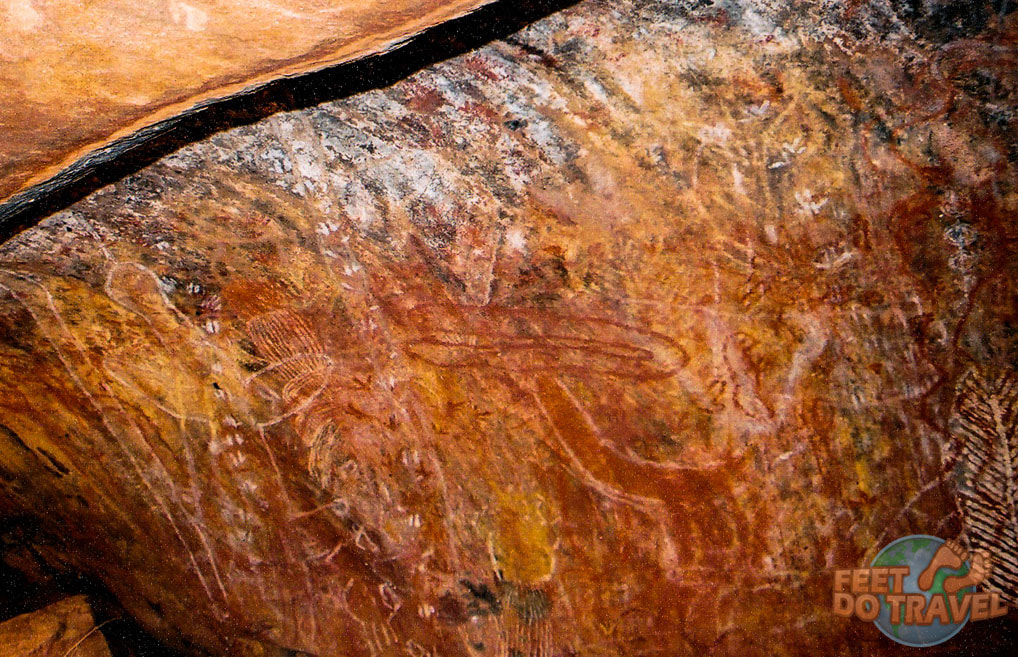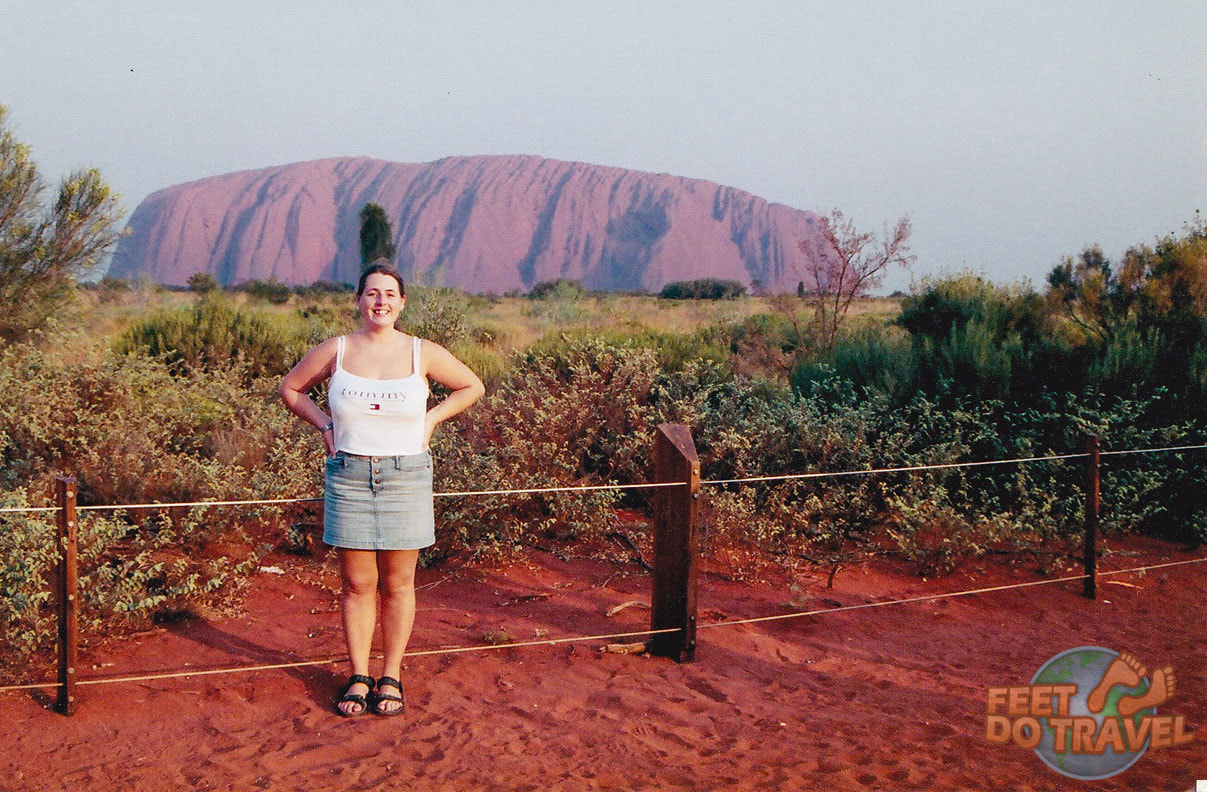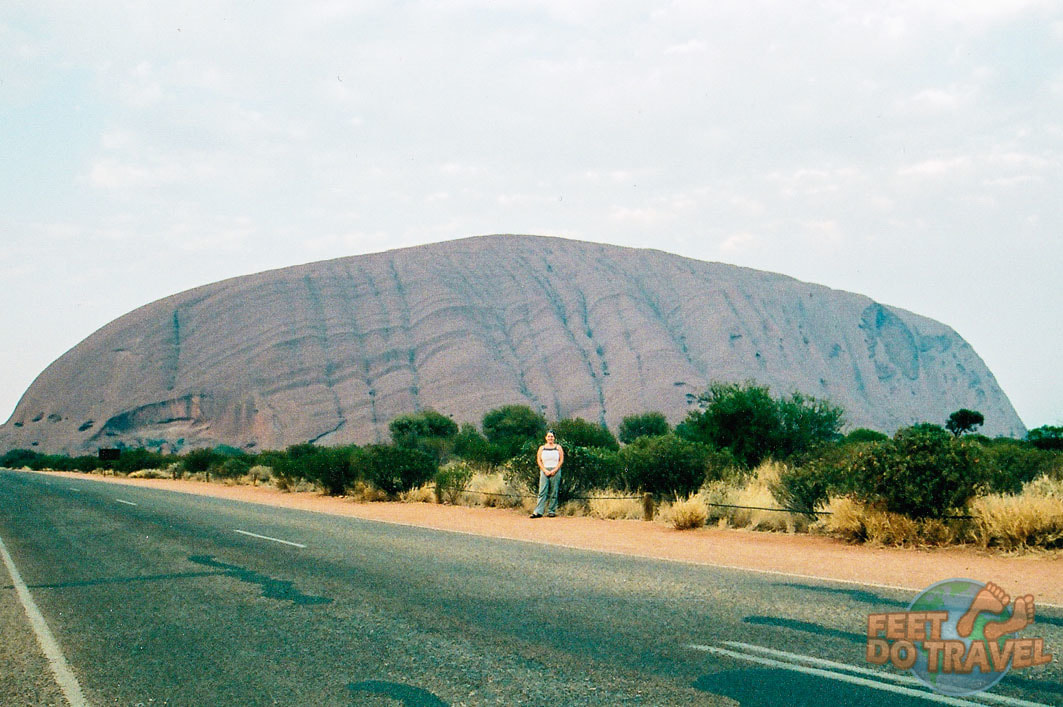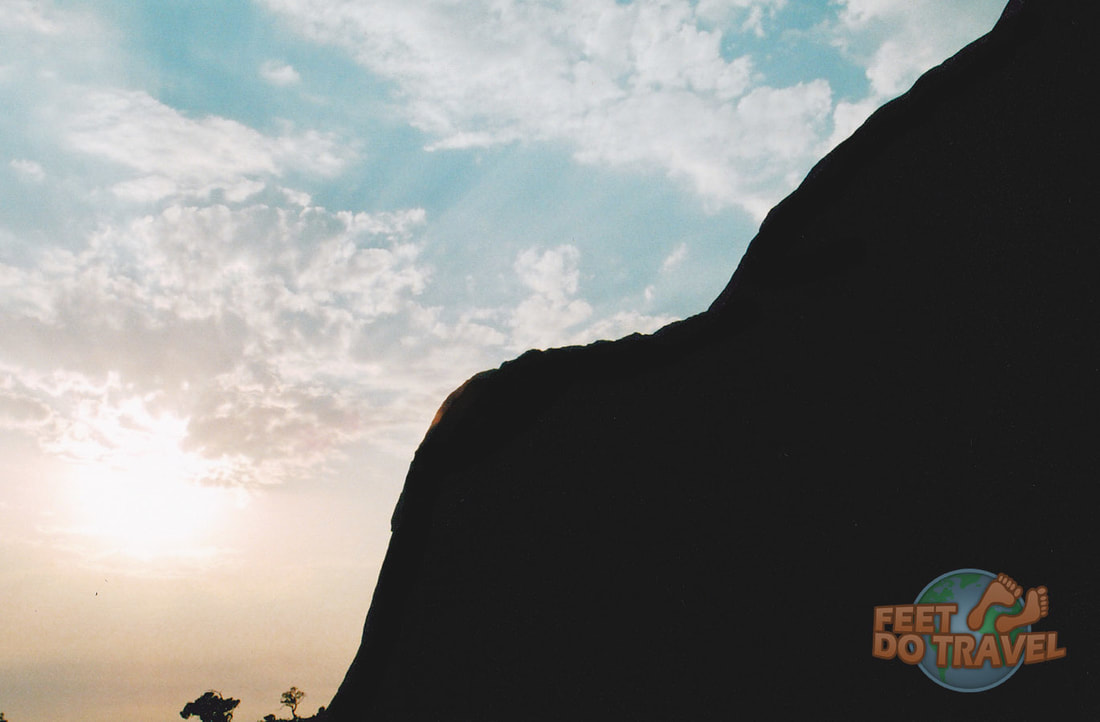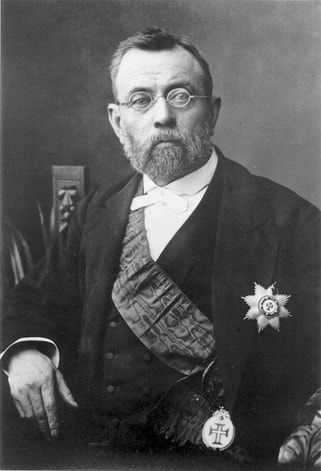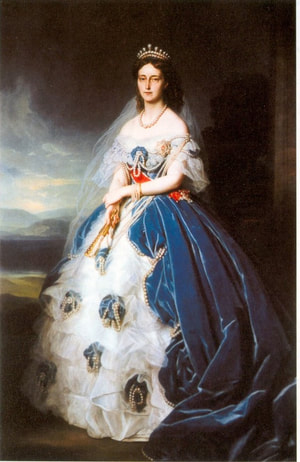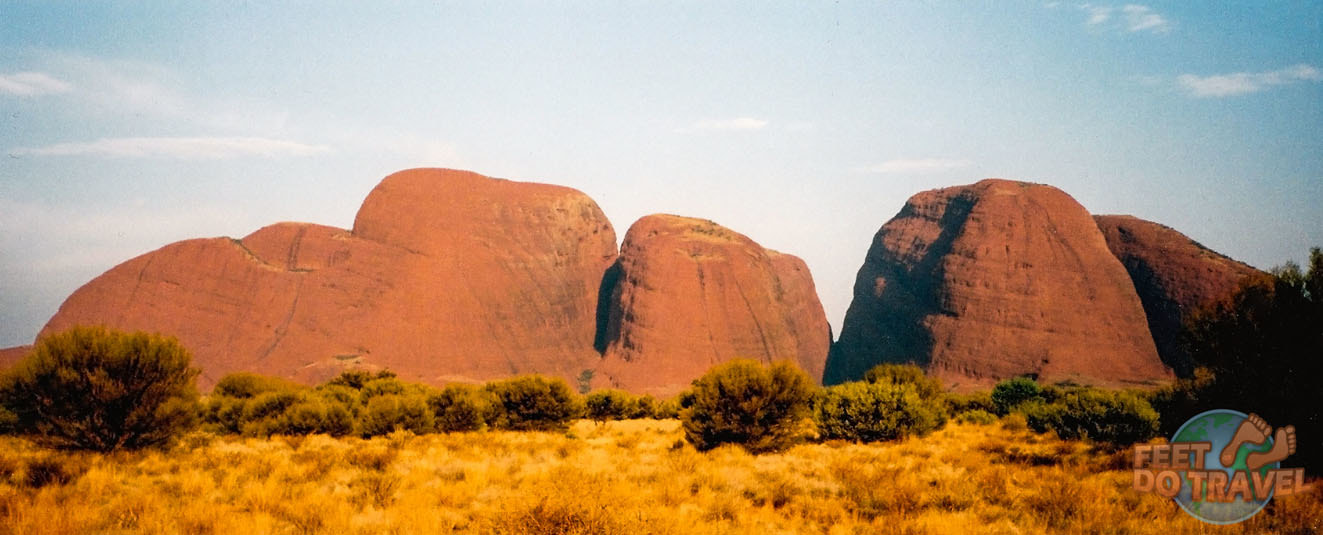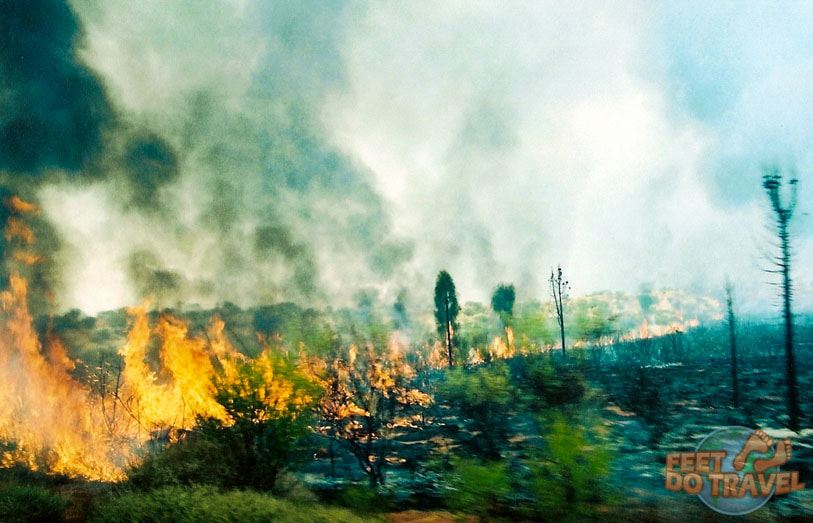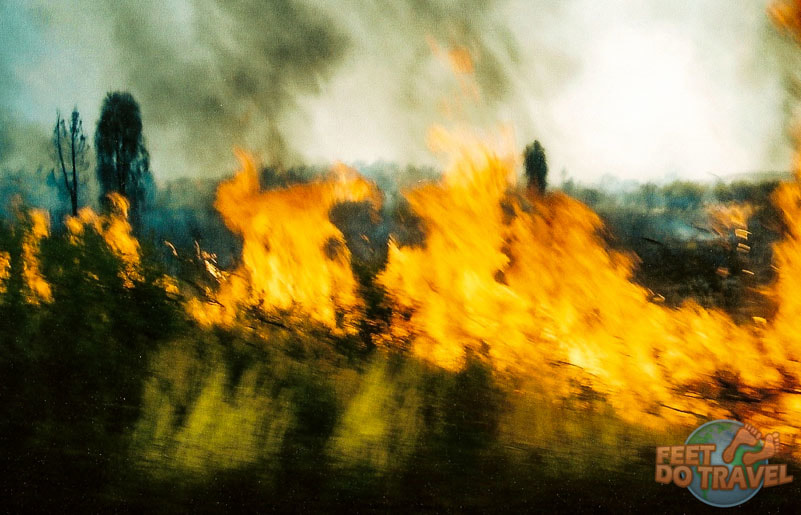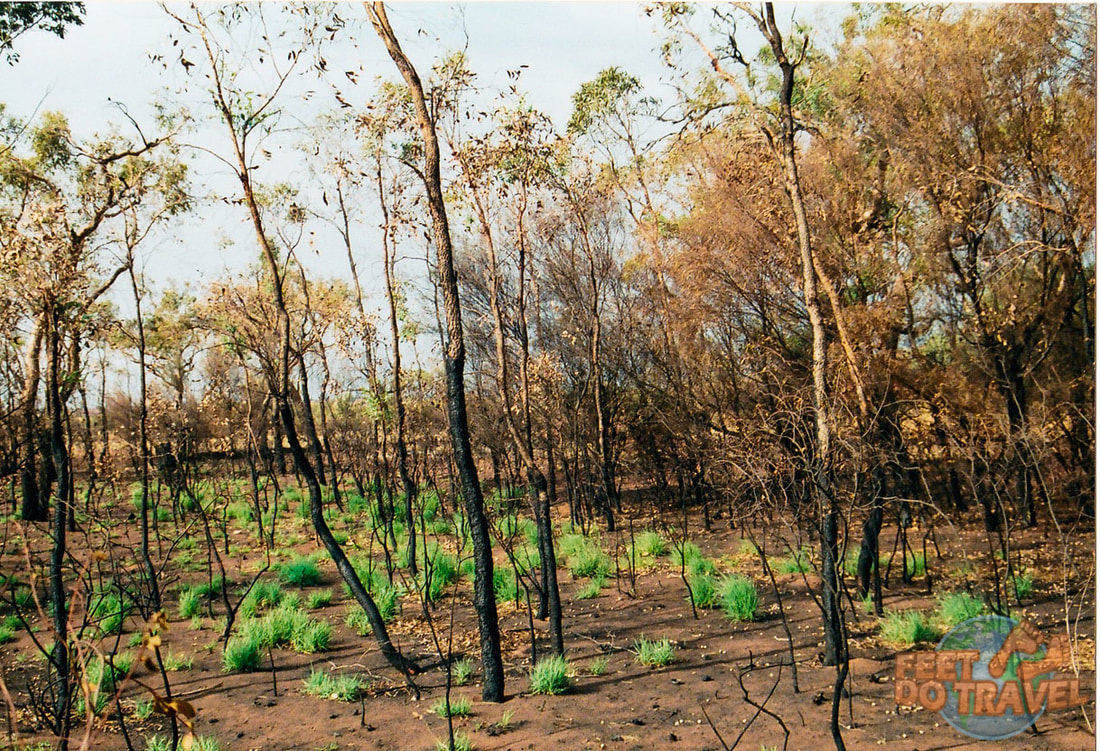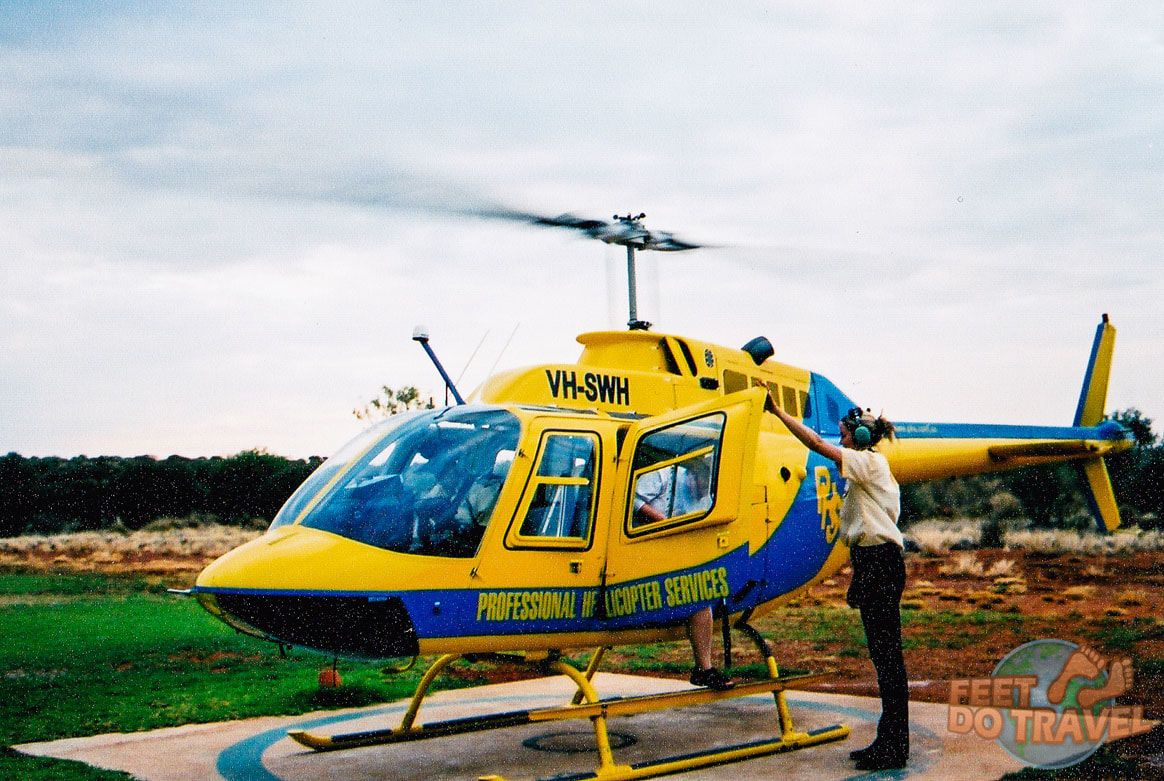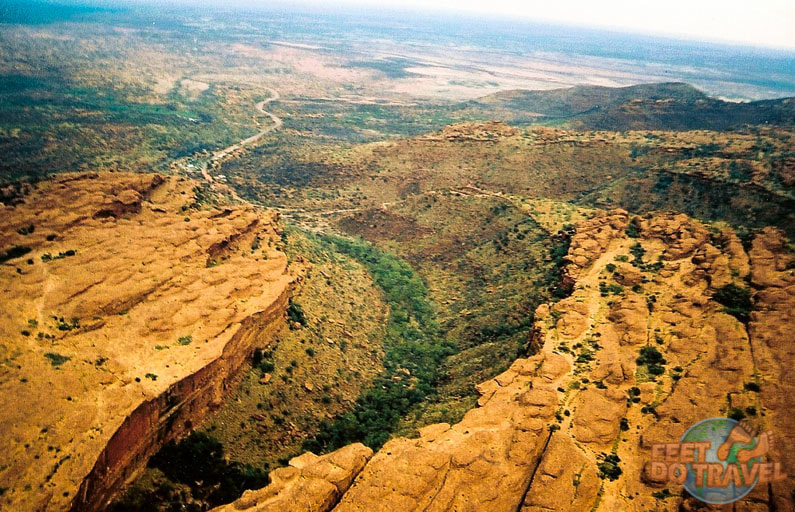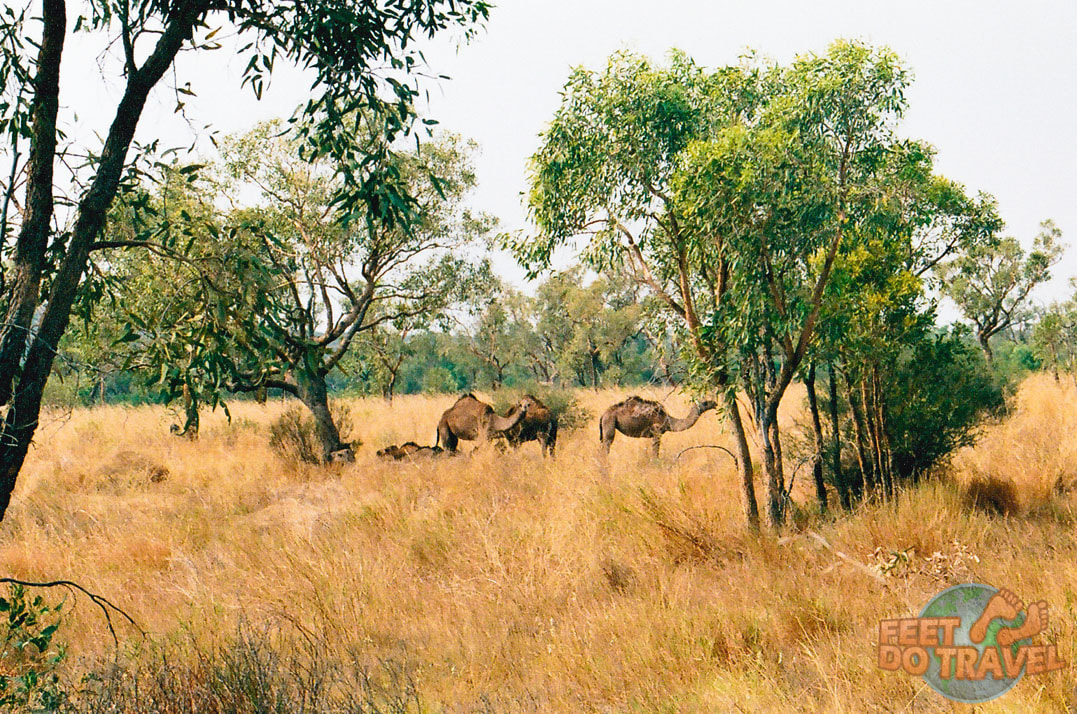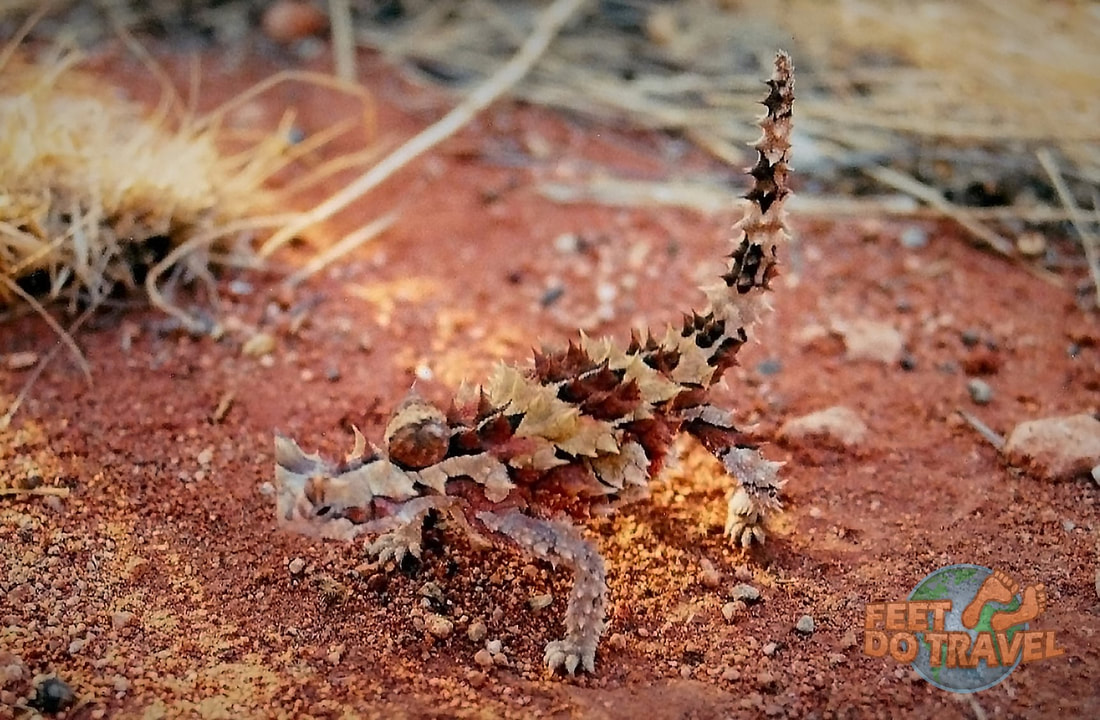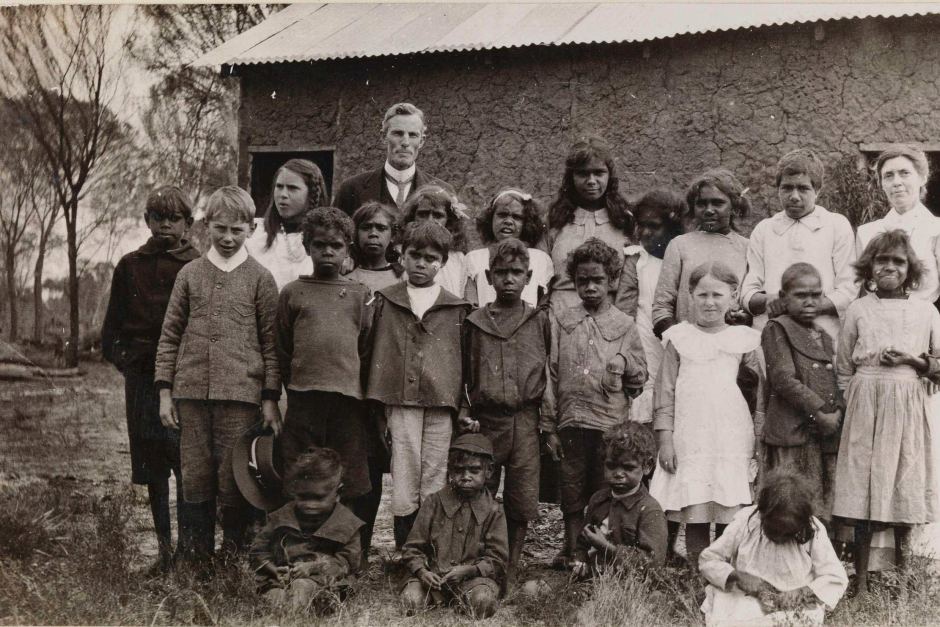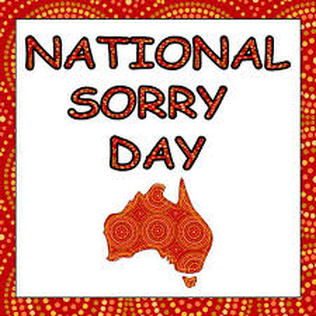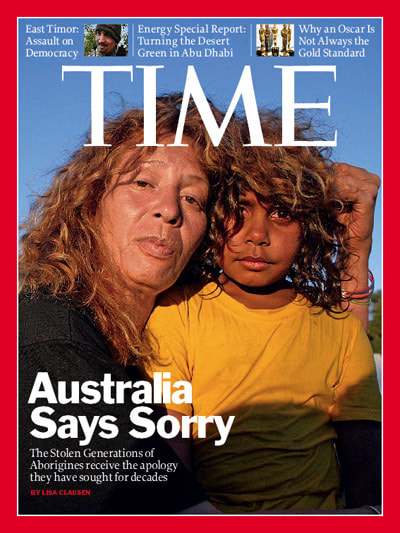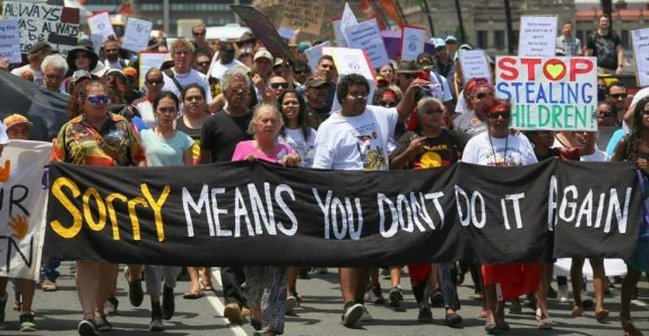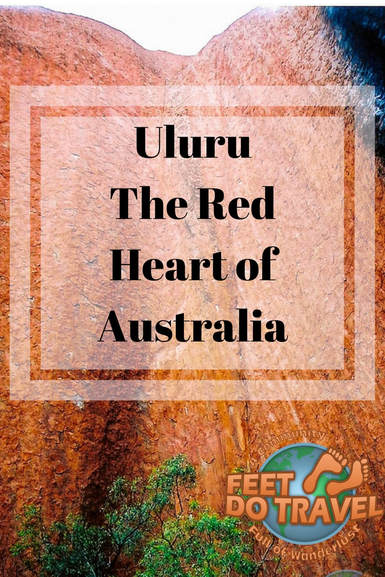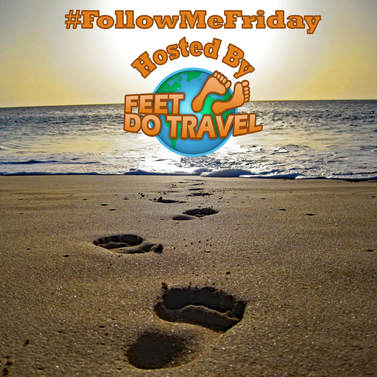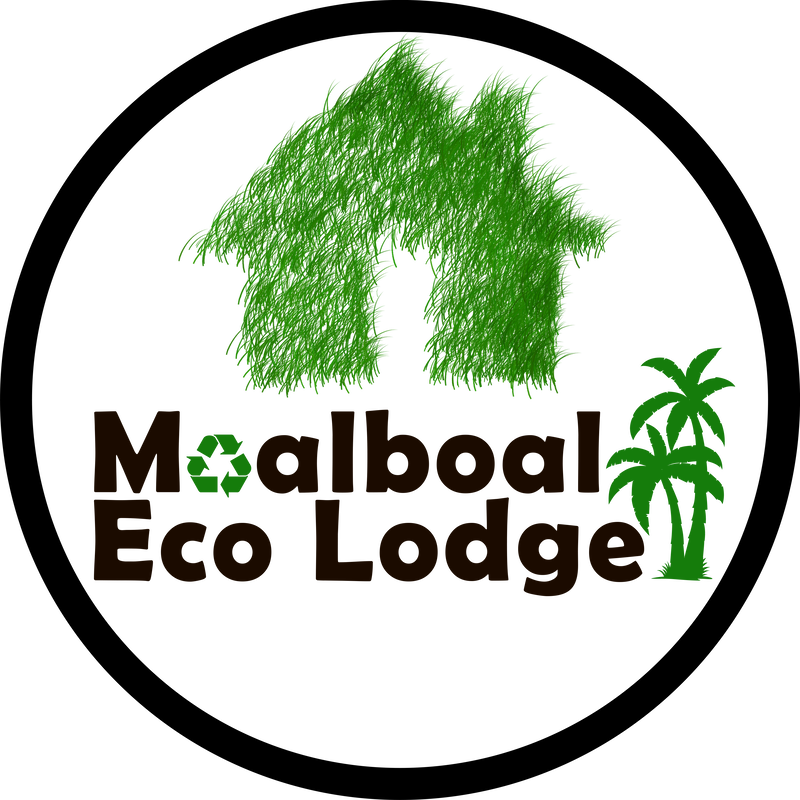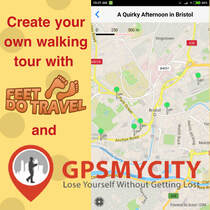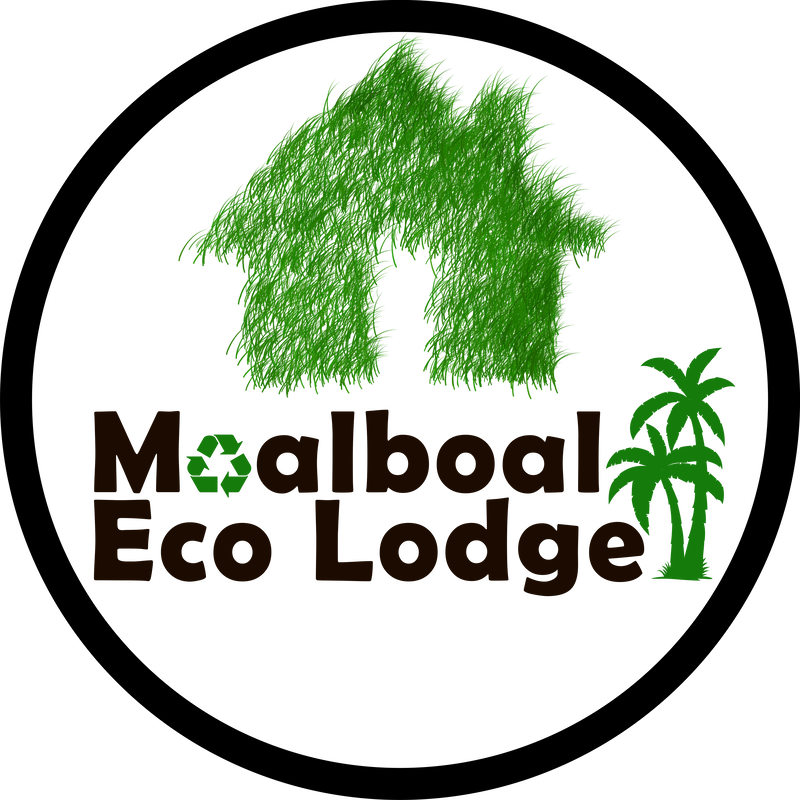Uluru or Ayres Rock as it’s also known is located in Uluru Kata Tjuta National Park, in the Northern Territory of Australia. This semi-arid red desert is vast. With only 150-280mm of rainfall per year, bush fires are common whether “controlled” or accidental by someone dropping a careless cigarette.
Uluru is famous for its sandstone monolith bearing the same name, but its more than just an iconic big red rock. It tells a story of one of the oldest living cultures dating back thousands of years, a culture that has been lost to “modern day” Australia as we know it.
If you want to know the “real Australia”, you need to visit Uluru … and what a story it has to tell.
To understand the significance of Uluru, you have to start with the indigenous people of central Australia. For 50,000 years the Anangu have lived off this land, Anangu means “people” in their native language of Pitjantjatjara (Pit-jan-ja-jarra)). Experts say they are the oldest living people on earth.
The British began to colonize Australia from 1788 but the Anangu remained undisturbed for decades. In the 1900’s, white settlement began to encroach on their traditional land and began claiming it as theirs. Despite being here for thousands of years before British colonization lead to “modern day Australia”, it wasn’t until 27 May 1967 that the Anangu were recognised as Australian citizens. In a referendum, 90.77% of the population voted “yes”, they should be given citizenship.
Yes, you read that right, the indigenous people of Australia were not recognized as true citizens of their own country. They had very few (if any) rights, and were subjected to years of segregation. I have gone into more detail regarding Australia’s dark history and the persecution of the Anangu people at the bottom of this post. I urge you to read that section as it’s an important part of modern history is truly shocking!
Tjukurpa answers the questions "how was the world and all life created and by whom". It explains the relationship between people, plants, animals and the land's physical features. It provides rules for behaviour, for living together, for caring for each other and respecting the land.
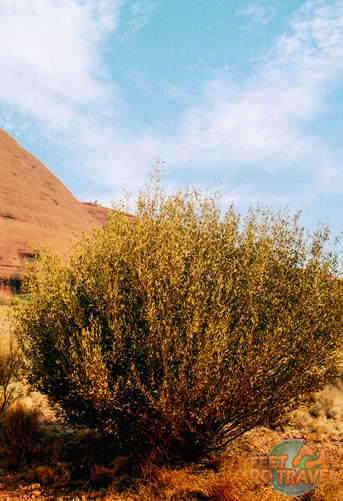
We saw a witchetty bush where the witchetty grubs live, good old fashioned bush tucker! They are an excellent source of protein so the women would forage for them. There’s as much protein in one witchetty grub as there is in a 250g steak – sorry, but I would prefer a steak.
We were told about the bloodwood eucalyptus tree which is used for food and medicine. A common use is to stop infection; a lot of the initiation ceremonies were quite painful and could leave wounds. Punishments were severe including a spear through the arm for a first "warning" and a second "warning" would be a spear through the leg. Harsh? Maybe, but it would stop you making the same mistake twice!
Girls are taught the proper way to forage for food, how it is to be prepared, cooked and eaten. They learn about bush food, how to read tracks, where to look for edible grubs, honey ants, bush figs and plums and how to separate and grind seeds. Women know about seasons cycles, habitats of animals and plants, and how to use bush plants for medicine. Correct marriage choices and appropriate behaviour is also taught (shame we aren’t taught this as well!)
Even though different technologies are used in their life today, the values and customs are still taught.
Watching their behaviour and the way they interacted showed me a way of life I couldn't even begin to imagine. I couldn't help but think that every Australian and visitor to this country should learn the true history of its indigenous people, the Anangu culture, and how they survived for millennia off this harsh yet beautiful land. I found it fascinating.
Feelings of guilt swept over me with what our ancestors have done. We changed this country beyond recognition. The Anangu have been persecuted for over 200 years and it saddens me that we didn’t respect their culture. The Anangu live on what nature has provided and use it in an incredible way; their diet of grubs, leaves, plums and meat is nutritious. They know which trees and plants to use as medicine, a natural way that has worked for thousands of years. Our culture just pops to the pharmacy to buy an unnatural product which hasn’t been around for anywhere near as long.
Uluru is a UNESCO World Heritage Site located in Uluru-Kata Tjuta National Park, 335km away from its nearest town, Alice Springs. Its statistics are impressive; a circumference of 9.4km, 2.4km long and 1.6km wide standing 348m high and 867m above sea level, protruding at an 83° angle out of the earth. Geologists believe it continues 7,000 metres below the surface.
For the past 50,000 years the Anangu have survived in an extremely harsh environment and this land was their only source of sustenance. They would preserve certain portions of their land as sacred sites, Uluru is one of them.
I will always insist on referring to this area as Uluru, because that is the traditional Aboriginal name.
To the Anangu, Uluru is sacred. An object of worship, only the initiated are permitted to climb. William Gosse was the first non-aboriginal to climb Uluru which would have upset the Anangu people. People that climb are called “minga” which means “ant” as this is what tourists look like; little ants marching up a mound in a line.
Although Anangu own the land, they work together with Parks Australia and have leased it for 99 years to jointly manage Uluru and Kata Tjuta. This allows tourists to share its beauty, learn more about the Anangu culture and hopefully respect it.
Paintings etched into the stone which tell stories. When a tribe would inhabit a land, the male tribe leader would draw around his hand on the rock to show that this land was now inhabited. If another tribe couldn't survive on their land anymore and would need to go to another tribe's land, the leader of this "foreign" tribe would draw his hand next to the other leader's hand as a form of communication, this was their way of letting the tribe know someone else was on their land but posed no threat. This is how they asked "please don't spear me!" If the land-owner would see this "foreigner" after "reading" the rock, he would start communicating with him which ended by shaking each other's penis. We couldn’t help but wonder how the women greeted each other!
Our tour took us to Uluru firstly for sunset, and for sunrise the next morning. It just has to be done. I won’t lie, it’s very popular and you will not be alone. Sunsets in this area can be spectacular, sadly on my visit I wouldn’t put it into this category, but it was still amazing to be here. Our driver popped open a bottle of champagne for the occasion and we were all in high spirits, why wouldn’t we be? We were visiting Uluru for sunset, a highlight of anyone’s trip!
Kata Tjuta is 25km west of Uluru and both were formed at the same time. Around 650 million years ago, the earth moved and a mountain was made. Around 300 million years later another earth movement occurred pushing the hardened layers upwards, forming the rocks as we know it today.
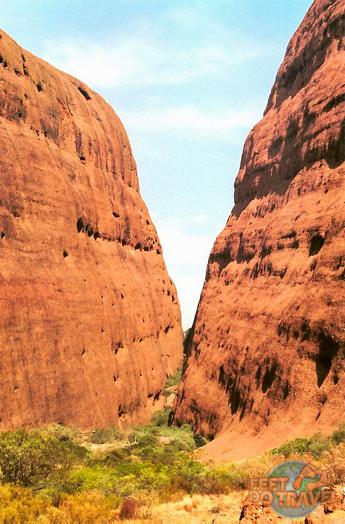 Walpa Gorge walk at Kata Tjuta
Walpa Gorge walk at Kata Tjuta
The area is more scenic and less crowded than its famous neighbour. Standing next to the 546m beautiful tall red rock was so impressive, I felt microscopic.
As I walked the Walpa Gorge and through the valley of Kata Tjuta, my imagination ran away with me and I wondered if it would feel this way to walk in the “Lord of the Rings”. Its natural beauty is unbeatable.
There was a small bench to sit for quiet reflection, the perfect place to absorb the spiritual importance of this area to the Anangu people. Kata Tjuta is very under-rated and extremely impressive.
We had to leave the National Park early because a bush fire was started by a careless cigarette. We watched in amazement as the fire spread across the landscape, it was on both sides of the road and we had to drive through it. Even with all the windows wound up we could feel the heat. It was so hot and intense, it felt bizarre to actually drive through a fire. We could see the fire sparks as new blades of grass started to burn making it spread further and faster.
Insects usually bury underground during a bush fire and stay there until the fire passes over them, afterwards, they come out of their hole and carry on as if nothing has happened. Unfortunately, buffalo grass burns hotter and longer than normal grass and, as the insects couldn’t stay underground for the length of time the grass was burning, they were either suffocated or burnt. Buffalo grass is also very difficult to kill off; it can't be poisoned as this would kill the natural grass growing around it, so Australians are stuck with it.
Sleeping in the Outback
On our tour, one night we had the option of sleeping under the stars. I could either have the comfort of a tent, or lay in a swag around a camp fire amidst the stars. I chose the latter and I wasn’t the only one.
A swag is a portable waterproof canvas sleeping bag with a foam mattress inside a zipped up cover. I set up my sleeping bag and within minutes we were all asleep. It was a lovely warm night but not too warm, just right for snuggling into your sleeping bag without being hot. The night was still and peaceful, absolutely no noise from crickets or any other bush creature!
Watarrka National Park is about three hours from Uluru and at its centre is Kings Canyon, named after Kings Creek. Both Kings Canyon and Kings Creek were named in 1872 by that good old explorer Ernest Giles, after his friend Fielder King. This area of land has been inhabited by the Luritja Aboriginal people for at least 20,000 years.
Kings Canyon is a 100 metre high gorge enclosed by sheer walls, its rubbly base is Carmichael sandstone deposited over 440 million years ago.
What better way to see this vast area than with a 15 minute helicopter flight? Yes I was a backpacker blowing the budget on a helicopter ride! At the time, I was swept up with the romance and beauty of this trip and thought “stuff it, the money can be repaid, the memories will last forever”.
It’s amazing to think that the canyon used to be one huge piece of rock which has cracked and grown bigger over millennia. Various boulders have fallen creating the valley at the bottom. It certainly was impressive.
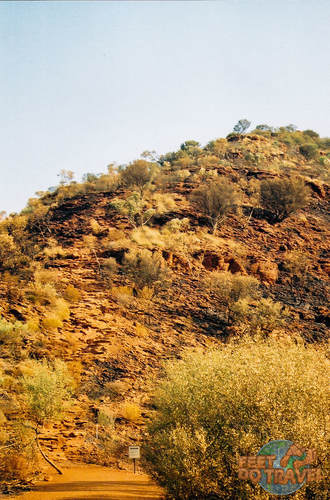 Heart Attack Hill - this wasn't the walk for me!
Heart Attack Hill - this wasn't the walk for me!
The next morning, we returned for the Kings Creek Walk, a 2.6km walk tracing the bottom of the gorge. It’s always hot in this area and it was no different for this walk, but reaching the lookout point provided a rewarding view of the gorge below.
For a longer hike and if you really want to see the beauty of the Canyon, there is the Kings Canyon Rim Walk, a 6km loop. The first 300-400 metres involves a straight up incline known as “Heart Attack Hill”. This walk wasn’t the one for me!
Being a semi-arid desert, camels thrive in the red centre but aren’t actually indigenous to the land. The first camel was introduced in 1840, but it was in 1860 that 24 camels were used to assist with building roads, and the train line which runs between Darwin and Adelaide. As they did such a sterling job, the camel business exploded and between 1870 and 1900, it is thought that 15,000 camels were estimated to have been shipped to Australia. Camels were also used for inland exploration by the likes of William Gosse and Ernest Giles.
With the introduction of motorised transport in the 1920’s, camels were no longer needed so released into the wild. Naturally, a desert is the perfect place for camels and they thrived, today, Australia has the largest population of feral herds in the world. It is suspected that over a million feral camels are now living in the Centre but are predicted to double every 8 – 10 years.
We saw the thorny devil when we were driving from Uluru back to Alice Springs where our tour ended. They are quite rare to see, so when our tour driver spotted two as we were driving, we felt very privileged and happy. What a way to finish off such a magical, memorable adventure. My three day Uluru trip was a highlight of the ten months I spent in this fascinating country.
You may hear people talk about “the flaming abos” but stories of “the stolen generation” are heartbreaking. If you have watched the movies “Rabbit Proof Fence” or “Australia”, you may have an idea of this recent history.
The “Stolen Generation” were children of aboriginal descent who were removed from their families by the Australian Government, this started the segregation of indigenous Australians from “European Australians”.
Towards the end of the 19th century until well into 1970’s, any child of mixed descent (one who was born of an aboriginal woman and white man) were taken. Relationships between aboriginal women and white men were formed when men were working on construction of railways, although it is said that not all “relations” were consensual.
Children were brutally and forcibly removed from their parents, and babies were stolen from their mothers at birth. The exact number of children removed is unknown, there are reports it could be 20,000 – 25,000 and others state that Australia-wide it could be much, much higher. Many Aboriginal people are still searching for their parents or siblings and the effects are ongoing. Sadly, the trauma suffered by these children are often passed onto their own children, continuing the cycle.
As explained by Philip Knightley (an Australian journalist and critic) “The Australian government literally kidnapped these children from their parents as a matter of policy. White welfare officers, often supported by the police, would descent on Aboriginal camps, round up all the children, separate the ones with light-coloured skin, bundle them into trucks and take them away. If their parents protested they were held at bay by police”
Naturally, this didn’t work. Around the age of 18, the children were released from government control with no lineage, feeling lost. They didn’t want the material things in life, what was more important to them was their family, culture, dances, knowledge, language, spirituality and losing all of this had a huge impact.
Awareness of the “stolen generation” was raised in 1981 by historian professor Peter Read of the Australian National University and by the late 1980’s, stories were gathering attention of the media and general public.
On 26 May 1997, the “Bringing Them Home” report was tabled in Parliament. This report was the result of a national inquiry which investigated the forced removal of the Aboriginal children. It recommended that the Liberal Prime Minster John Howard, apologise to the Stolen Generation. He refused to do so however on 26 August 1999, he expressed “deep and sincere regret that indigenous Australians suffered injustices under the practices of past generations, and for the hurt and trauma that many indigenous people continue to feel as a consequence of those practices”.
On 13 February 2008, the new Prime Minister Kevin Rudd issued a formal apology on behalf of the government to indigenous Australians.
Have you visited Uluru or is a place on your wish-list? Do you know about Australia's history? Let us know your thoughts in the comments section below!

Don’t leave home without travel insurance! We recommend World Nomads, just click on the link to get a quote!
Pin this post for future reference!
We are proud to host the #FollowMeFriday blog Linkup. If you have a blog post you would like to share, feel free to click on the picture below which will take you through to our Facebook Community and drop your link there. The link-up is open from midnight (12.00am )Friday morning (UK time) and will close midnight (12.00pm) UK time Sunday. We are a fun and loyal group who are more than happy to comment, share and reciprocate! Happy Travelling Feet Fans!
